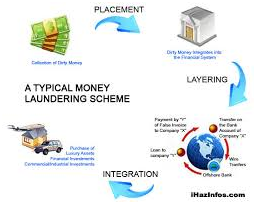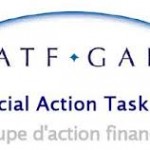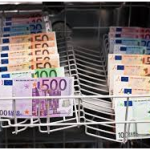The third stage in the washing cycle – Integration

 Integration
Integration
It is the stage at which laundered funds are reintroduced into the legitimate economy, appearing to have originated from a legitimate source. Integration is the final stage of the process, whereby criminally derived property that has been placed and layered is returned (integrated) to the legitimate economic and financial system and is assimilated with all other assets in the system. Integration of the “cleaned” money into the economy is accomplished by the launderer making it appear to have been legally earned. By this stage, it is exceedingly difficult to distinguish legal and illegal wealth.
Not all money laundering transactions go through this three-stage process. The three basic stages may occur as separate and distinct phases or may occur simultaneously or, more commonly, they may overlap. Transactions designed to launder funds can for example be effected in one or two stages, depending on the money laundering technique being used. How the basic steps are used depends on the available laundering mechanisms and requirements of the criminal organisations.
Integration methods
The main methods of integration are:
• Loan arrangements
• Inheritance
• Redemption of life policy or similar investment
• Credit and debit cards
• Consultants
• Corporate financing
• Asset sales and purchases
• Business recycling
• Import/export transactions (Sham transactions)
• Foreign Bank Complicity
Loan arrangements: The establishment by money launderers of anonymous companies in countries where the right to secrecy is guaranteed. They are then able to grant themselves loans out of the laundered money in the course of a future legal transaction. Furthermore, to increase their profits, they will also claim tax relief on the loan repayments and charge themselves interest on the loan.
Inheritance: Funds held in one jurisdiction on behalf of the launderer may be transferred to another jurisdiction and be purported to represent a gift or inheritance
Redemption of life policy or similar investment: This method involves the launderer in placing funds with an insurance company and some time later encashing the property (or borrowing against it) so that a cheque from the insurance company has the appearance of emanating from a legitimate source.
Credit and debit cards
Credit and debit cards are efficient ways for money launderers to integrate illegal money into the financial system. By maintaining an account in an offshore jurisdiction through which payments are made, the criminals limit the financial trail that leads to their country of residence.
In recent years, authorities have grown more attuned to the use of offshore credit cards as a money laundering technique. As a result, certain offshore jurisdictions now enable regulators to obtain from banks all records of transactions made by their credit card clients.
A brief description of the process is as follows:
Credit cards: Mr X transfers illegal funds into an offshore bank account. He also signs up for a credit card from the bank.
Debit cards: Mr X transfers illegal funds into an offshore bank account. He also signs up for a debit card from the bank.
Mr X uses the credit card or debit card to make payments for purchases and transactions around the world.
Consultants
Consultancy arrangements can cover a wide range of non-quantifiable services and are often used to integrate illegal funds into the legitimate financial system.
The use of consultants in money laundering schemes is quite common. The consultant might not even exist. For example, the criminal could actually be the consultant and the money is declared as income from services performed and can be used as legitimate funds. In this scheme the criminal is channeling money back to himself.
In many cases, the criminal will employ an actual consultant (e.g. accountant, lawyer or investment manager) to do some legitimate work. This could involve purchasing assets. Often, the criminal transfers funds to the consultant’s client account from where the consultant makes payments on behalf of the criminal.
A brief description of the process is as follows:
Mr X sets up a shell corporation and a related bank account in an offshore jurisdiction. The shell corporation hires a consultant.
The consultant performs services and makes payments for the shell corporation. The consultant is paid by the shell corporation.
Corporate financing
Corporate financing offers a flexible way to transfer money between companies. This technique is often used in sophisticated money laundering schemes.
Corporate financing is typically combined with a number of other techniques, including the use of offshore banks, consultants, complex financial arrangements, electronic funds transfers, shell corporations and actual businesses. This allows money launderers to integrate very large amounts of money into the legitimate financial system.
Money launderers may also take a tax deduction on interest payments made by them in corporate financings.
From appearances alone, such transactions are identical to legitimate corporate finance transactions. Financial service professionals serving legitimate businesses need to look closely to find peculiarities in their dealings, such as:
• Large loans by unknown entities
• Financing that appears inconsistent with the underlying business
• Unexplained write-offs of debts.
A brief description of the process is as follows:
Mr X sets up a shell corporation and a related bank account in an offshore jurisdiction. He also sets up a legitimate business in his country of residence.
Using illegal money in the offshore account, the shell corporation makes a business loan to or equity investment in, the legitimate business.
Asset sales and purchases
The sale of property to integrate laundered money back into the economy is a common practice amongst criminals.
To integrate illegal funds into a legitimate financial system, money launderers often resort to actual or fictitious sales and purchases of assets.
This technique can be used directly by the criminal or in combination with shell corporations, corporate financing and other sophisticated methods. The end result is that the criminal can treat the earnings from the transaction as legitimate profits from the sale of the assets.
Around the world, real estate sales and purchases are a favoured method of integrating illegal money.
A brief description of the process is as follows:
Mr X sets up a shell corporation and a related bank account in an offshore jurisdiction. He also owns or controls a legitimate business or real estate asset in his country of residence.
The shell corporation purchases the business or real estate at an inflated price. The earnings from this transaction are treated as legitimate profits.
Business recycling
Business recycling is a common integration technique in which illegal funds are mixed with cash flow from a seemingly legitimate business.
Legitimate businesses that also serve as conduits for money laundering are referred to as ‘front businesses’. Cash-intensive retail businesses are some of the most traditional methods of laundering money. This technique combines the different stages of the money laundering process.
The principal requirement when using businesses as fronts is that they have high cash sales and/or high turnover. This way it becomes easy for criminals to merge illegal funds and difficult for the authorities to spot the scheme.
An important indicator of front businesses is the relation between the size and nature of the business and the amount of revenue it generates. For example, if a newspaper stand starts making deposits into its bank account at $1 million a month, this should alert the bank to the possibility of illegal activity.
A brief description of the process is as follows:
Mr X owns or controls a legitimate, cash-intensive car wash business.
Mr X deposits illegal funds into the business. These funds are treated as revenue from the legitimate business.
Import/export transactions (Sham transactions)
Import/export transactions are a common integration technique used by money launderers, especially in order to move illegal funds between countries.
To bring ‘legal’ money into the criminal’s country of residence, the domestic trading company will export goods to the foreign trading company on an over-invoiced basis. The illegal funds are remitted and reported as export earnings. The transaction can work in the reverse direction as well.
In many cases, there is no actual export of goods or only the export of fake goods. In such cases, the trading companies may also exist only on paper. Bankers may be able to spot these transactions if the underlying trade documentation is inadequate or the underlying pricing is incorrect.
A brief description of the process is as follows:
Mr X sets up an import company in a foreign country as well as an export company in his country of residence.
The export company exports goods to the foreign import company. The import company remits illegal funds to pay for the goods on an over-invoiced basis.
Foreign Bank Complicity
Money laundering using known foreign banks represents a higher order of sophistication and presents a very difficult target for law enforcement. The willing assistance of the foreign banks is frequently protected against law enforcement scrutiny. This is not only through criminals, but also by banking laws and regulations of other sovereign countries. Also a financial institution, such as banks, might be owned or controlled by unscrupulous individuals suspected of conniving with drug dealers and other organised crime groups. This makes the process easy for launderers. The complete liberalisation of the financial sector without adequate checks also provides leeway for laundering.
Find more: Contributing Authors





























